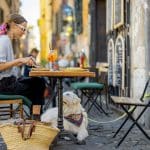As you delve into the world of ballet, one fact remains undeniable: it demands an extraordinary level of physical control, finesse, and precision. Ballet dancers, akin to athletes, must engage in rigorous training to achieve such mastery. In recent times, an intriguing topic has emerged in the sphere of dance pedagogy: the integration of somatic training techniques.
Somatics takes a holistic approach to movement, emphasizing the dancer’s awareness of their body in motion. This article will explore how somatics can enhance a ballet dancer’s performance, incorporating insights from reputable sources such as PubMed, Crossref, and Google Scholar.
Sujet a lire : What’s the Impact of Multi-Directional Plyometrics on Agility in Basketball Forwards?
Implications of Somatic Training on Dancer’s Movement Quality
Movement quality, often overlooked by conventional training methods, forms a pivotal element of ballet performance. Somatic techniques could hold the key to its improvement. In this section, we will examine how somatics can revamp a dancer’s movement quality, drawing upon insights from PubMed, Crossref, and Google Scholar.
The term ‘somatic’ originates from the Greek word ‘soma,’ referring to the living, sensing body. Somatic techniques seek to facilitate a conscious understanding of our body, its movements, and how it interacts with the space around it. By promoting active engagement with one’s body, somatic training enhances the dancer’s awareness of their movement patterns, fostering a better understanding of their kinetic capabilities and limitations.
Dans le meme genre : What Are the Best Practices for Load Monitoring in Elite Youth Soccer Academies?
A study published on PubMed Central (PMC) corroborated this notion. The researchers discovered that dancers who underwent somatic training showcased superior movement fluency and adaptability. They were more attuned to their bodies, leading to more coordinated and graceful movements.
Somatic Techniques and the Enhancement of Motor Learning
Motor learning is a critical aspect of ballet, where dancers must master intricate routines and execute them flawlessly. Let’s explore how somatic training techniques can impact motor learning, referencing scholarly articles and studies available via Crossref and PMC.
Motor learning involves the acquisition of motor skills through practice. It is a complex cognitive process that involves concentration, repetition, feedback, and gradual refinement. The integration of somatic techniques within the conventional ballet training regime could offer a dramatic improvement in motor learning outcomes.
According to a Psychol article, somatic training techniques like body scanning and focused attention can enhance the process of motor learning. The article argues that such practices improve proprioception, the body’s ability to sense its position and movement. Enhanced proprioception, in turn, facilitates more precise motor control and promotes faster, more efficient learning of complex movement sequences.
The Role of Imagery in Somatic Training
Imagery is a vital aspect of somatic training, playing a significant role in improving ballet performance. This section will explore the efficacy of imagery as a somatic technique, using research and studies sourced from Google Scholar and Crossref.
Imagery refers to the creation and manipulation of images in one’s mind. In the context of dance, imagery is often used to envision movements before physically executing them. This mental rehearsal primes the body for the actual performance, enhancing both the quality and speed of learning.
A study published on Crossref underscores the value of imagery in dance training. The researchers found that dancers utilizing imagery exhibited improved technical execution and expressive artistry. By envisioning their movements, dancers could understand and embody the choreography more effectively.
How Somatic Training Promotes Body Awareness and Injury Prevention
Ballet demands a high degree of physical exertion, putting dancers at risk of injury. This section will discuss how somatic training can promote body awareness and mitigate injury risks, with insights sourced from PubMed and Google Scholar.
The high-intensity and repetitive nature of ballet training often leads to overuse injuries. By increasing body awareness, somatic techniques equip dancers with a better understanding of their bodies. This consciousness allows them to recognize the early signs of physical strain, enabling timely intervention and injury prevention.
An article published on PubMed elucidates this concept. It revealed that somatic training led to a significant reduction in injuries among ballet dancers. The study concluded that heightened body awareness enabled dancers to modulate their movements better, thus minimizing undue strain and injury risk.
Somatics and the Psychological Well-being of Dancers
Dance is not solely a physical endeavor; it is profoundly psychological as well. In this final section, we will look at how somatic training can contribute to the psychological well-being of ballet dancers, referencing work from Psychol and Google Scholar.
Somatic techniques offer dancers an opportunity to reconnect with their bodies, fostering a mindful presence. This mindfulness can lead to improved psychological well-being, reducing stress, and boosting self-confidence.
A Psychol review study found that dancers who engaged in somatic practices reported lower levels of stress and higher self-esteem. By encouraging dancers to tune in to their bodies, somatic training can cultivate a healthy mind-body connection, thereby enhancing not only their performance but also their overall well-being.
The Impact of Somatic Training on Emotional Expression
Equally as crucial as the physical demands of ballet is the emotional expression that brings the dance to life. This section, with the help of findings from Google Scholar and Crossref, will delve into how somatic training can enhance emotional expression in ballet dancers.
Emotional expression in ballet is not merely about facial expressions; it is the embodiment of the character’s emotions through movement. Somatic training techniques, such as body scanning and mindfulness, can help dancers to deepen their emotional connection with their body and, consequently, with the characters they portray.
A study found on Crossref underlines the importance of emotional connection in enhancing dance performance. The researchers noted that dancers who practiced somatic techniques were better able to portray a range of emotions through their movements. Such a deeper connection with their feelings allowed them to perform with more authenticity and sophistication.
Moreover, a Google Scholar article highlights the role of somatic practices in managing performance anxiety. The article suggests that by cultivating a deeper mind-body connection, dancers can better manage their anxiety and deliver more emotionally resonant performances.
The Future of Somatic Training in Ballet
Ballet, despite its centuries-old traditions, is not immune to evolution. The inclusion of somatic training in ballet education shows a shift towards a more holistic approach to dance training. This concluding section will explore the potential future of somatic training in ballet, utilizing insights from PubMed, Google Scholar, and Crossref.
As the demands of ballet continue to evolve, so too must the methods used to train dancers. Somatic practices offer a way to enhance the physical and emotional capabilities of dancers, promoting a more well-rounded performance.
An article on PubMed reveals the growing interest in the integration of somatic techniques into traditional dance education. The researchers suggested that the inclusion of these techniques could lead to better injury prevention, improved performance, and enhanced psychological well-being for dancers.
In essence, somatic training doesn’t only improve a ballet dancer’s technique but also contributes to their overall health and well-being. As such, there is a potential for somatic practices to become a core component of ballet training in the future.
In conclusion, somatic training techniques have a lot to offer ballet dancers. They promote better movement quality, enhance motor learning, facilitate emotional expression, improve body awareness, and contribute to psychological well-being. With the wealth of benefits that somatic training can provide, it’s no wonder that these practices are gradually gaining recognition in the world of ballet. As research continues to demonstrate their effectiveness, we can expect to see more widespread adoption of these techniques in ballet education.















